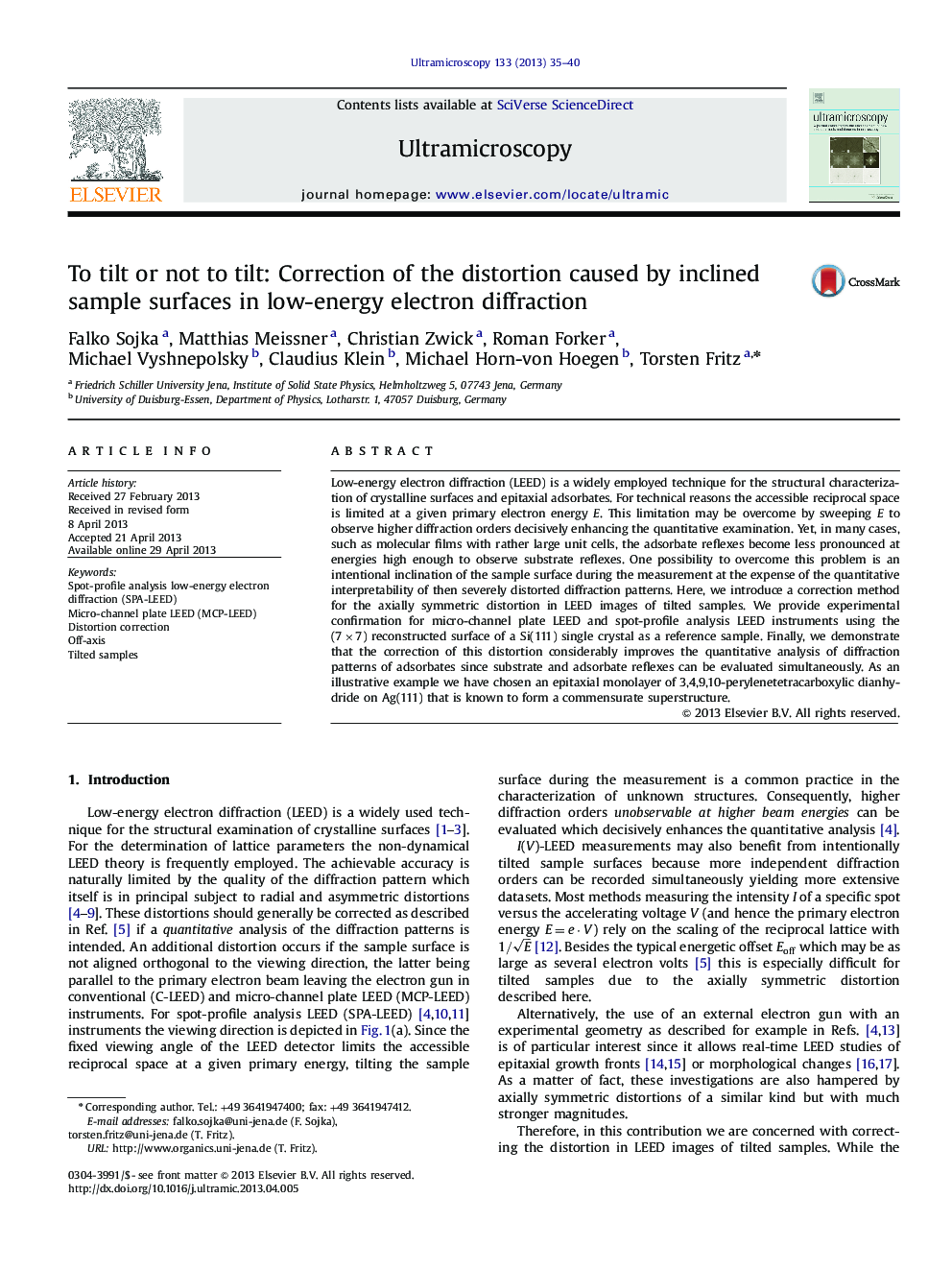| کد مقاله | کد نشریه | سال انتشار | مقاله انگلیسی | نسخه تمام متن |
|---|---|---|---|---|
| 8038496 | 1518345 | 2013 | 6 صفحه PDF | دانلود رایگان |
عنوان انگلیسی مقاله ISI
To tilt or not to tilt: Correction of the distortion caused by inclined sample surfaces in low-energy electron diffraction
ترجمه فارسی عنوان
برای شیب یا عدم شیب: اصلاح اعوجاج ناشی از سطوح نمونه شیب دار در پراکندگی الکترون با کم انرژی
دانلود مقاله + سفارش ترجمه
دانلود مقاله ISI انگلیسی
رایگان برای ایرانیان
موضوعات مرتبط
مهندسی و علوم پایه
مهندسی مواد
فناوری نانو (نانو تکنولوژی)
چکیده انگلیسی
Low-energy electron diffraction (LEED) is a widely employed technique for the structural characterization of crystalline surfaces and epitaxial adsorbates. For technical reasons the accessible reciprocal space is limited at a given primary electron energy E. This limitation may be overcome by sweeping E to observe higher diffraction orders decisively enhancing the quantitative examination. Yet, in many cases, such as molecular films with rather large unit cells, the adsorbate reflexes become less pronounced at energies high enough to observe substrate reflexes. One possibility to overcome this problem is an intentional inclination of the sample surface during the measurement at the expense of the quantitative interpretability of then severely distorted diffraction patterns. Here, we introduce a correction method for the axially symmetric distortion in LEED images of tilted samples. We provide experimental confirmation for micro-channel plate LEED and spot-profile analysis LEED instruments using the (7Ã7) reconstructed surface of a Si(111) single crystal as a reference sample. Finally, we demonstrate that the correction of this distortion considerably improves the quantitative analysis of diffraction patterns of adsorbates since substrate and adsorbate reflexes can be evaluated simultaneously. As an illustrative example we have chosen an epitaxial monolayer of 3,4,9,10-perylenetetracarboxylic dianhydride on Ag(111) that is known to form a commensurate superstructure.
ناشر
Database: Elsevier - ScienceDirect (ساینس دایرکت)
Journal: Ultramicroscopy - Volume 133, October 2013, Pages 35-40
Journal: Ultramicroscopy - Volume 133, October 2013, Pages 35-40
نویسندگان
Falko Sojka, Matthias Meissner, Christian Zwick, Roman Forker, Michael Vyshnepolsky, Claudius Klein, Michael Horn-von Hoegen, Torsten Fritz,
